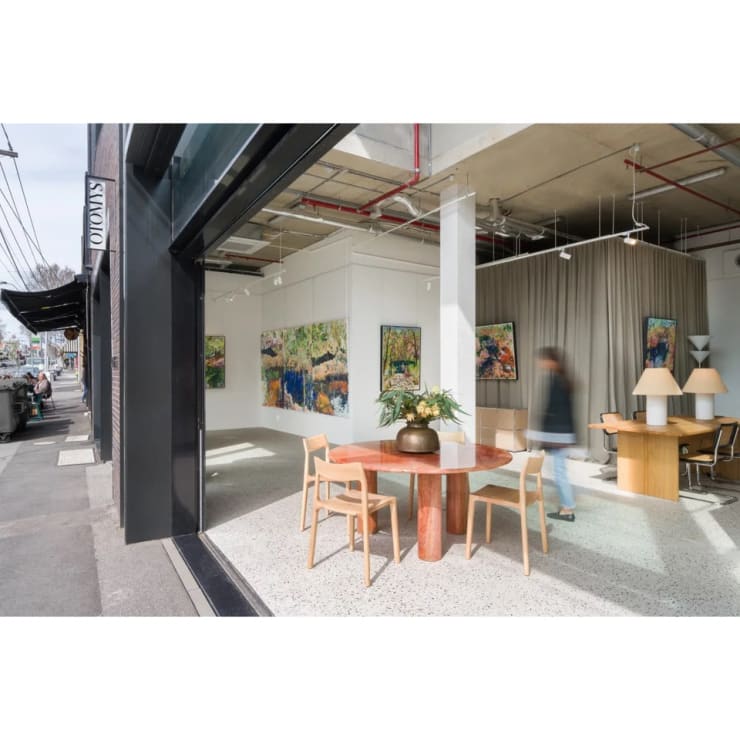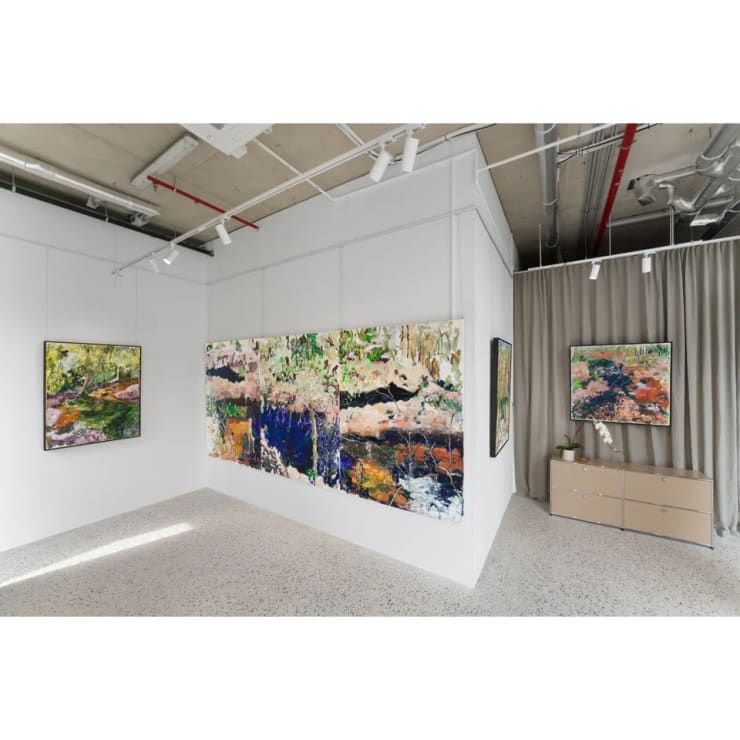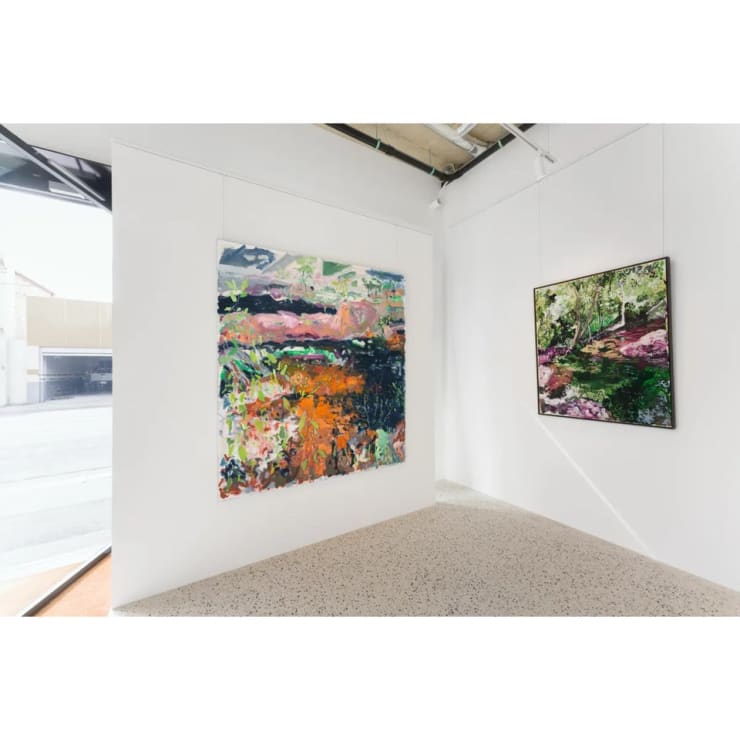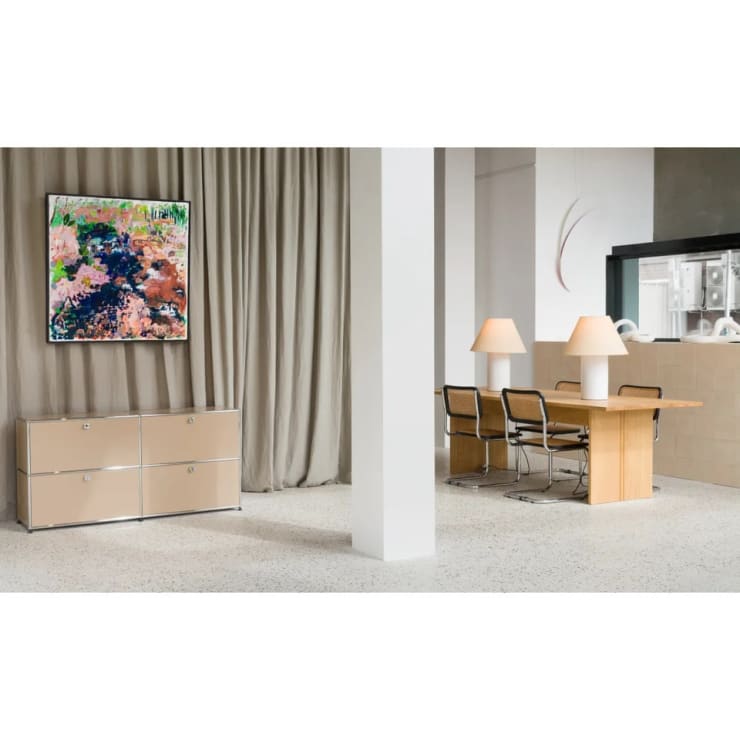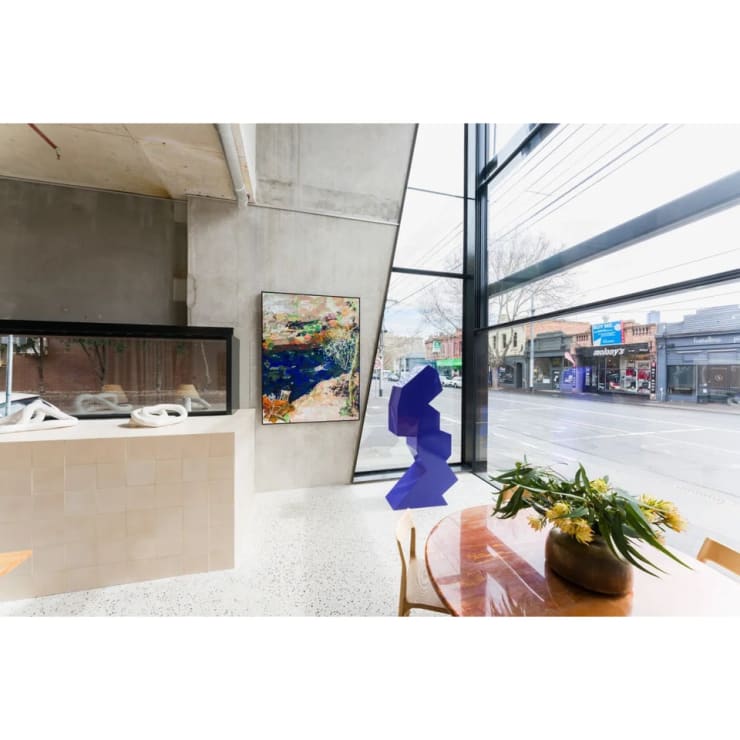OTOMYS: What real-world places did you reference when creating these paintings?
Emma Itzstein: The paintings in this series are literal places. They’re all representations of Litchfield Park in NT, where I was lucky to spend two weeks last September when they opened the border to regional Victoria while Melbourne was still in lockdown - so the contrast of confinement vs freedom was so palpable and visceral for me when I visited. Even though the work visually represents this landscape, I paint more with an emotional landscape in mind of the feelings I felt while I was there and what was consuming my thinking at the time and brining those memories of these sensations into the work. This is true of nearly all my work - it’s almost like the physical landscape acts as a flagpole of my psyche at the time, and I use the physical formal elements of my surroundings as a vessel to hold these emotions and discoveries.
OTOMYS: What role do memories and emotions have in your works?
Emma Itzstein: I’m more interested in channelling feelings, sensations, and emotional states of mind when painting — it’s this emotional landscape that I bring into the work to charge it with energy and movement to try to evoke the feeling of being in a landscape rather than purely observing it in a visual sense. I’m interested in how memory and narrative interplay and how narrative therapy can be practiced to reframe memories and past experiences.
OTOMYS: Can you share any memories or emotions that have influenced the works in ‘I carry your landscapes with mine'?
Emma Itzstein: I’ve been really interested in the notion of “bittersweetness” in this body of work - the idea that joy and suffering can and does occur simultaneously every millisecond across the universe - and how this can be both beautiful and equally ache inducing. On a personal level I’ve been psychologically trying to really embrace acceptance and reject all or nothing thinking in favour of multiplicity and infinite perspective as a way to navigate a healthier state of mind — I’ve explored this practice metaphorically in my painting.
OTOMYS: Tell us about the title of this exhibition.
Emma Itzstein: It’s a play on words referencing Joan Mitchell’s retrospective exhibition “I carry my landscapes around with me” as well as a nod to EE Cummings poem; I carry your heart with mine. It’s sort of an ode to influence and the historical influences on my work as well as the idea that the landscape holds millions of subjective experiences within the one objective physical place.
OTOMYS: This connection with the work of Joan Mitchel is very interesting, as her work is highly abstract and expressionistic. Why do you think it is important to have this connection/ visual dialogue with other artists? How does your work engage with both abstract and landscape art, and why is this intersection important to you?
Emma Itzstein: The way in which I approach the early layers of my work is extremely expressionist; fast, instinctual, feverish, and emotional. My later layers, which turn expressionistic forms into recognisable landscapes channels a more meditative, thoughtful and analytical side of my brain. It’s the layering and this switch in gears in my painting practice that holds the most significance and consistency across all my bodies of work. But it’s also letting those layers come through in glimpses across the canvas that builds a visual depth and interest and this idea of embracing the past and history and not trying to cover it all up which interests me. For this body of work I took that idea to the literal degree and would literally paint my own versions of a Mitchell or Hurvin Andersson for example, to then completely paint over them with only glimpses showing through where you might just get a flicker of a colour or the corner of a mark, as a symbolic nod to how we’re all influenced as artists by those who came before us, and as you say, add to this dialogue over time and history.
OTOMYS: How does your artistic process and the physicality of your practice contribute to the conceptual significance of your works?
Emma Itzstein: For this body of work, I really wanted to be conscious of having a dialogue with each individual painting and dismiss any ideas of what the painting “should” look like. I embraced a sort of dance with the canvas where you must move and respond to what the painting is telling you to do next, or what to explore, rather than just applying a formula or process to the work. The result is a body of work that responds to the same landscape in a myriad of ways — again a nod to this idea of not one singular subjective truth, but an infinite possibility of what can be true or real or authentic.
OTOMYS: Tell us more about the inclusion of figures in some of your landscapes. How do people shape your impression of/ connection to the landscape? What are they symbolic of?
Emma Itzstein: I wanted to incorporate the figure to represent the idea of play, recreation and joyful pleasure; something that alludes to this idea of experimentation, the erotic, and not having a goal or end point to achieve. It also relates to the tension between objective and subjective experiences and all the personal narratives and stories that exist within the face of times of collective trauma, as well as a single moment in time in a single physical space.
Credit: exhibition install photographed by Matthew Stanton.
September 28, 2022
